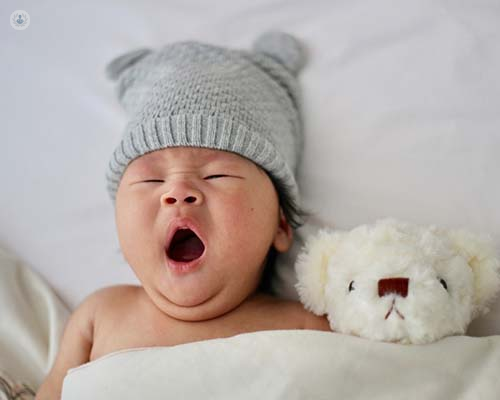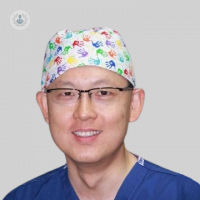Sleep apnoea in children and babies
Written in association with:Sleep apnoea can be a problem for adults – and not just because it causes snoring! It means that sufferers get less oxygen when they sleep and feel more tired the next day as a result. But can babies and children have the same problem? We spoke to expert ENT surgeon Mr Michael Kuo, who has the answers.

Can babies and children get sleep apnoea?
Babies and children can definitely get sleep apnoea. We are recognising this much more frequently than previously. It can often result in tiredness during the day and more children at school lose concentration during the day and have cognitive deficits as a result.
Why is sleep apnoea a problem?
Sleep apnoea is a problem because we all require high-quality sleep in order to function. It’s especially important in children, where good-quality sleep is essential for growth and cognitive development. Therefore, if the child’s sleep is disturbed, it has wide-ranging negative effects on the child.
What causes sleep apnoea in children?
By far the most common cause of sleep apnoea in children are enlarged tonsils and adenoids. You can see the tonsils by looking in the child’s mouth and depressing the tongue; often you can see them just by asking the child to say “ahh”.
In some languages, e.g. Polish, the term for adenoids is “the third tonsil”. This description is apt – the adenoids are much like a third tonsil. They sit behind the nose. It is not usually possible to see them.
There are other causes of sleep apnoea in children, but they are much less common.
How do I know if my child or baby has sleep apnoea?
The word “apnoea” means “stopping breathing”. It can be obstructive or central.
Obstructive sleep apnoea means that the child is trying to breathe, but is meeting a resistance. Central apnoea means that the child’s automatic drive to breathe is somehow compromised. Central apnoea is very uncommon.
Obstructive sleep apnoea most frequently presents as noisy breathing when asleep; that is, it can just be simple snoring, but it becomes sleep apnoea if the child holds their breath as a result.
What is the treatment for paediatric sleep apnoea?
The first thing is to ensure that the diagnosis is correct. It is often helpful to take a short video of your child sleeping and show this to the doctor. If the disturbance of sleep is unequivocal, the doctor can discuss non-surgical and surgical options.
If there is some doubt, a sleep study (polysomnography) can be carried out. This indicates how frequently the child holds their breath during a night’s sleep.
The treatment for enlargement of the tonsils and adenoids causing sleep apnoea is simply the removal of the tonsils and adenoids. Where there is no infection involved, the method for reducing these has become much safer, not to mention less painful, compared to traditional methods. The main risk of adenotonsillectomy is bleeding, and this is dramatically reduced by the technique of intracapsular tonsillectomy. By leaving a very thin layer of tonsil tissue, the nerves are not exposed, reducing pain, and any exposed blood vessels are smaller in calibre.
There are, of course, other methods of treatment such as CPAP (continuous positive airway pressure), but in children, the overwhelming aetiology of sleep apnoea in children is adenotonsillar hypertrophy.
Don't hesitate to visit Mr Kuo’s Top Doctors profile to book an appointment.


